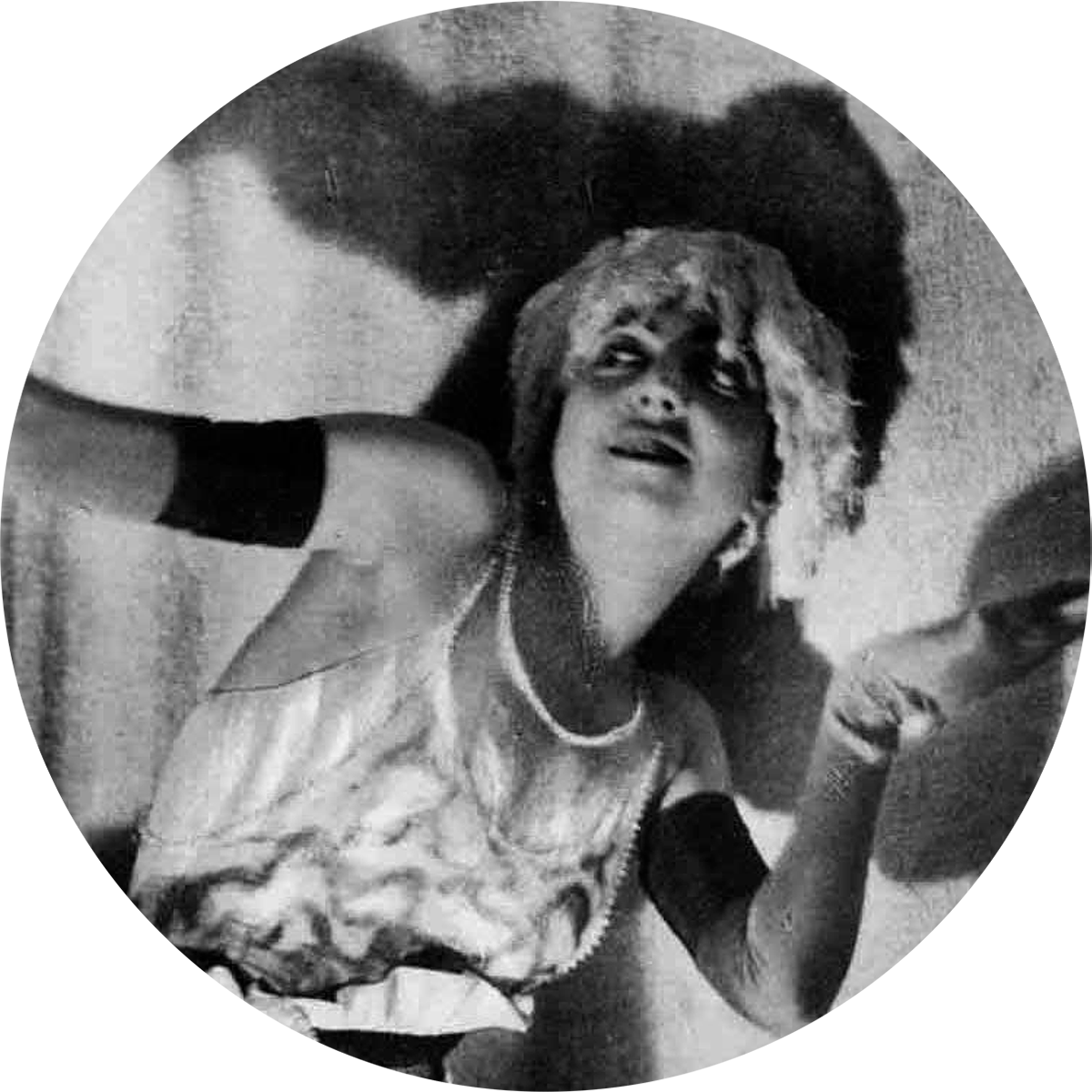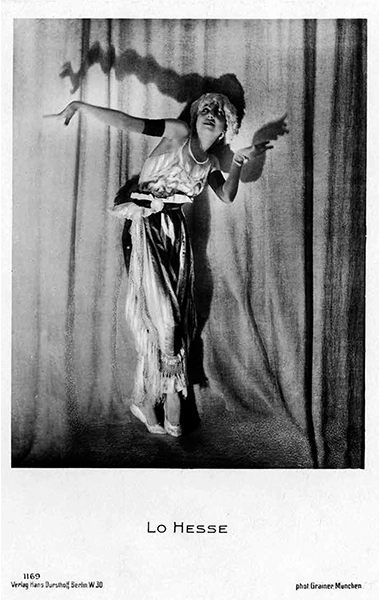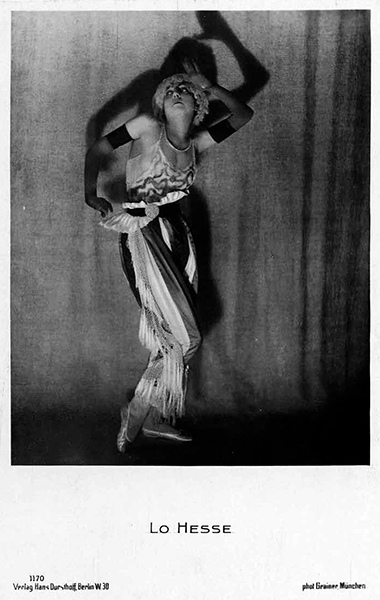> People > Lo Hesse

Lo Hesse (1889–1983?)
DANCER, PARTNER OF JOACHIM VON SEEWITZ
Charlotte Hesse, who married at an early age and was widowed soon afterwards, studied music in Munich and took lessons from the Munich painter, poster artist and stage designer Walter Schnackenberg. He advised her to dance, so Seewitz and Hesse formed a dance couple in Munich in 1916 and soon achieved great success with their exquisite programme. Schnackenberg created costumes, graphics and posters for them, and they were immortalised as well in Rosenthal porcelain figurines. In 1919, they turned down an offer from the Vienna State Opera to perform a dance pantomime by Richard Strauss and embarked on tour of South America. Their estate is kept at the German Dance Archive in Cologne.
Lo Hesse | photo: Franz Grainer, Munich | picture postcard, motif no. 1169, Hans Dursthoff publishers, Berlin | © Deutsches Theatermuseum, inv. no. II 20312
“Der Traum des Torero” (“The Dream of the Torero”)
Germany 1921, commercial film, two minutes
Director: Lucian Bernhard (source: Filmportal.de)
Production: Werbedienst GmbH
With Joachim von Seewitz and Lo Hesse
The archivist Iris Kaufmann discovered the two-minute commercial (animated) film “Der Traum des Torero” (“The Dream of the Torero”) in the Hückeswagen City Museum in 2007. Filmed on cellulose nitrate in 1921, the commercial film also featured Joachim von Seewitz and Lo Hesse, who were a famous dancing couple at the time. Their appearance in this commercial for cigarettes earned Seewitz and his partner 100,000 marks. Their joint dance career began in Munich in 1916, which they continued with great success in South America in the 1920s. || B.O.


